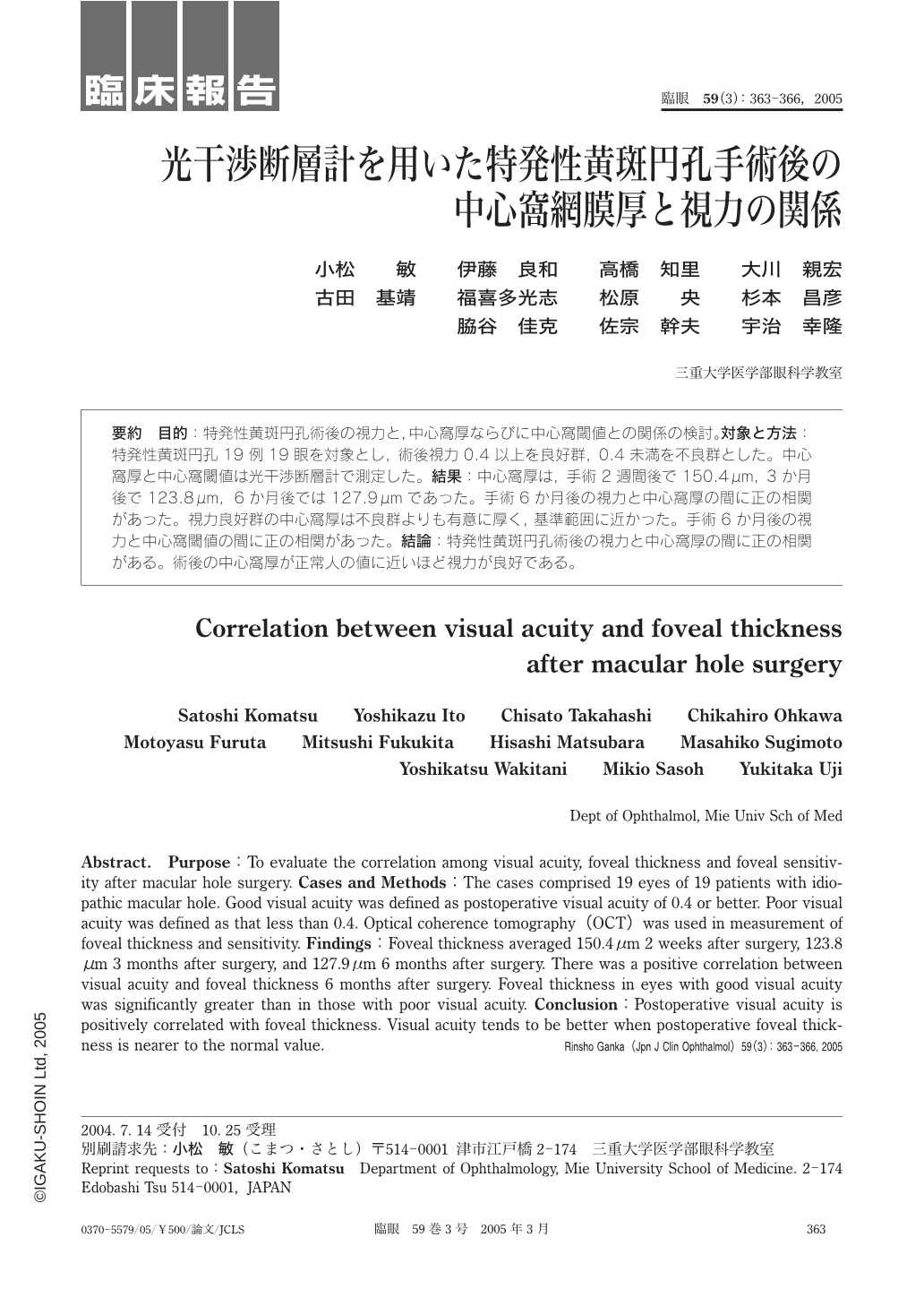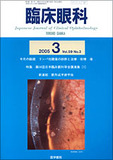Japanese
English
- 有料閲覧
- Abstract 文献概要
- 1ページ目 Look Inside
目的:特発性黄斑円孔術後の視力と,中心窩厚ならびに中心窩閾値との関係の検討。対象と方法:特発性黄斑円孔19例19眼を対象とし,術後視力0.4以上を良好群,0.4未満を不良群とした。中心窩厚と中心窩閾値は光干渉断層計で測定した。結果:中心窩厚は,手術2週間後で150.4μm,3か月後で123.8μm,6か月後では127.9μmであった。手術6か月後の視力と中心窩厚の間に正の相関があった。視力良好群の中心窩厚は不良群よりも有意に厚く,基準範囲に近かった。手術6か月後の視力と中心窩閾値の間に正の相関があった。結論:特発性黄斑円孔術後の視力と中心窩厚の間に正の相関がある。術後の中心窩厚が正常人の値に近いほど視力が良好である。
Purpose:To evaluate the correlation among visual acuity,foveal thickness and foveal sensitivity after macular hole surgery. Cases and Methods:The cases comprised 19 eyes of 19 patients with idiopathic macular hole. Good visual acuity was defined as postoperative visual acuity of 0.4 or better. Poor visual acuity was defined as that less than 0.4. Optical coherence tomography(OCT)was used in measurement of foveal thickness and sensitivity. Findings:Foveal thickness averaged 150.4μm 2 weeks after surgery,123.8μm 3 months after surgery,and 127.9μm 6 months after surgery. There was a positive correlation between visual acuity and foveal thickness 6 months after surgery. Foveal thickness in eyes with good visual acuity was significantly greater than in those with poor visual acuity. Conclusion:Postoperative visual acuity is positively correlated with foveal thickness. Visual acuity tends to be better when postoperative foveal thickness is nearer to the normal value.

Copyright © 2005, Igaku-Shoin Ltd. All rights reserved.


